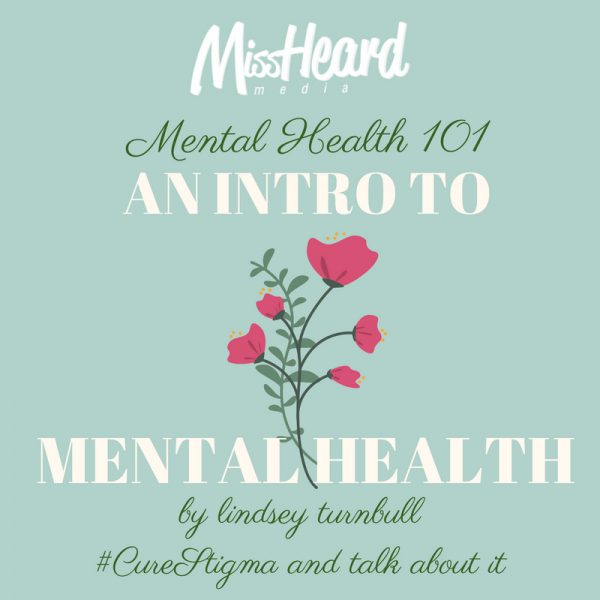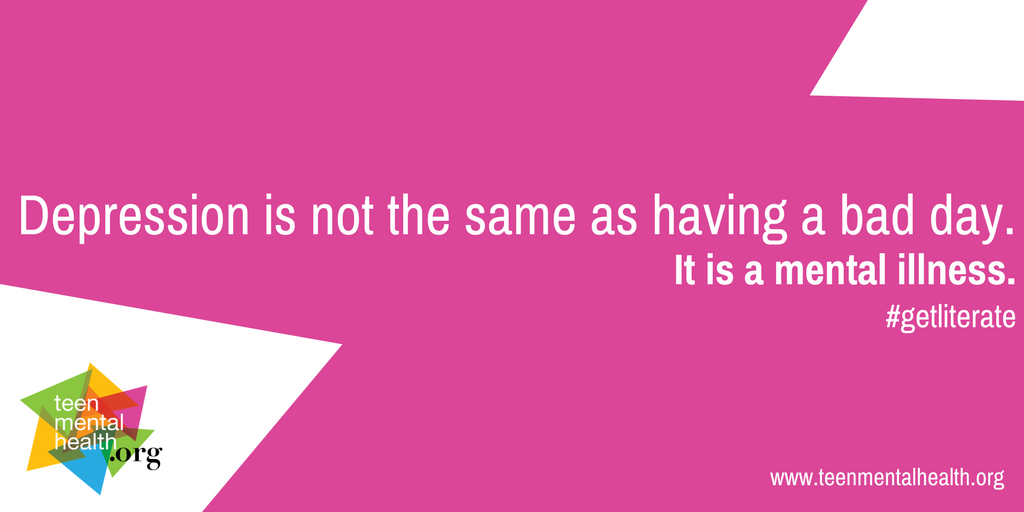
Mental Health 101: An Overview
by Lindsey Turnbull
MissHeard Media Founder
May is Mental Health Awareness Month. The 2022 theme is “Back to Basics,” a reflection on two years in a (continuing) pandemic that affected many people’s mental health.
According to Mental Health America, mental health is:
emotional and social well-being and impacts how we think, feel, and behave. It plays a role in connecting with others, making decisions, handling stress, and many other aspects of daily life. Everyone has mental health, and it deserves your attention just as much as your physical health does.
EVERYONE has mental health, including teenagers. According to NAMI (National Alliance on Mental Illness), nearly one in five Americans will experience mental illness in their life. Some people think that mental health conditions are “adult problems.” Fifty percent of all mental illnesses begin by age 14, and 75% by age 24. Treatment often does not begin until 6-23 years after the onset of symptoms. This is not an “adult” problem, it is something that affects young adults and teens.
 When it comes to talking about mental health, there is nothing to be ashamed of. Nearly 20% of all American adults live with a mental health condition. Many things contribute to mental health: genetics, environment, and many factors that we don’t fully understand. Mental illness occurs in every culture around the world, in people of all races, orientations, classes, and socioeconomic groups.
When it comes to talking about mental health, there is nothing to be ashamed of. Nearly 20% of all American adults live with a mental health condition. Many things contribute to mental health: genetics, environment, and many factors that we don’t fully understand. Mental illness occurs in every culture around the world, in people of all races, orientations, classes, and socioeconomic groups.
Mental illness does not discriminate:
18% percent of Hispanic adults,
22% of white adults,
17% of Black adults,
13% of Asian adults,
18% of Indigenous American/Alaskan Native adults,
16% Native Hawaiian/Pacific Islander adults, and
35% of mixed/multiracial adults
live with a mental illness.
LGBTQ folks of all races are twice as likely to experience mental health issues (47%).
Undiagnosed and untreated mental health conditions can lead to higher rates of dropping out, incarceration, and even suicide. Students with significant depression symptoms are twice as likely to drop out- and students with mental health concerns generally are 3x more likely to repeat a grade. Seventy percent of youth involved in juvenile justice have a mental illness. Suicide is the SECOND leading cause of death in people aged 10 to 34, following accidents and homicide. LGBTQ youth are four times more likely to attempt suicide. (Source for all above stats)
Mental illness is a serious issue, and too often young people feel shame, or a stigma, about opening up about their mental health. The stigma around mental illness promotes shame, fear, and silence. No one should feel ashamed or afraid of getting help.
In addition to shame and stigma, there additional barriers to getting care, such as a lack of insurance/cost barriers, or living in an area with a shortage of mental health professionals (this affects 148 million Americans or about 44%).
For teenagers, family can be an additional barrier to care. Some adults brush off teenage mental illness as a phase, mood swings, or hormones. While those things can all play a role, it is important to know the signs of mental illness so you can get help for yourself or a friend. According to the Health Department, the most common mental illnesses that manifest in the teen years include:
- Major depression disorder
- Bipolar disorder
- Eating disorders
- Schizophrenia
- Addictions
- Obsessive Compulsive Disorder
- Social Anxiety Disorder

Mental health does not look the same on any two people. While TV and movies may show mental illness a certain way, know that these depictions are not always reality for every person. These warning signs are guidelines, not hard and fast rules. It’s also important to note that these signs are persistent and ongoing (ie. Occurring for more than two weeks, occurring outside of stressful times like finals, a break-up, etc.).
Everyone gets sad, down, or tired sometimes, but feeling sad, fatigued, unmotivated, and withdrawn for more than two weeks may be a sign of depression.
Other warning signs include:
- Uncharacteristic, risk-taking behaviors that can cause harm
- Sudden and overwhelming heart-racing fear, which may include fast breathing or physical pain, for seemingly reason
- Not eating, binging, significant weight loss or weight gain
- Severe mood swings
- Use of drugs or alcohol
- Drastic changes in behavior, personality, sleep habits, giving up favorite hobbies and/or possession
- Extreme difficulty concentrating
- Intense worries or fears that stop you from hanging with friends, going to classes, or participating in usual activities.
Sometimes TV, books, and movies make mental illness look almost glamorous, or make it seem like you can get better again by finding a partner, getting into college, or accomplishing a goal. While all of those things CAN affect your mood, they are not cures! Mental health care is just as important as physical health care. No one would ever suggest that getting into your dream college would cure your asthma- and it’s not true of mental illness.
If you suspect you may have a mental health issue, please reach out to someone! It is better to seek treatment and not need it, than to need treatment and not seek it. Mental health is TREATABLE, especially when it is diagnosed early. People with mental illnesses live long, happy lives as productive members of society- they are our teachers, neighbors, community leaders, relatives, and friends.
Here are some ways you can support a friend or relative who is living with mental health issues:
- Listening without being judgmental or telling them what to do or how to feel.
- Offering to support them however they need. This may be listening, helping them find someone to talk to, or just hanging out.
- Keep the person’s trust by not sharing their private information. The only exception is if the person is talking about suicide. Please get help immediately!
- Validate their feelings, rather than telling them to “snap out of it.”
- Educate yourself on mental illnesses.
- Support your friend’s healthy behaviors.
- Mind your words. Avoid using language that denigrates those with mental illness.
- Take care of yourself too!

There are many great resources out there for you. Here are just a few:
Take a screening for commonly diagnosed mental illnesses.
www.teenmentalhealth.org
www.nami.org and The NAMI Fact Sheet Library
The National Institute of Health
How to Support a Friend (and what to avoid)
Black Emotional Mental Health Collective
The Trevor Project for Young LGBTQ Lives
National Asian American Pacific Islander Mental Health Association
National Alliance for Hispanic Health
Indian Health Service
You can also Google Teen therapist + your city to find therapists who are trained to work with teenagers.
If you are in crisis, you can text the Crisis Text Line: 741741 or call the Suicide Prevention Hotline: 1800-273-TALK. Both are available 24/7, free of charge.
Related Reading:
Mental Health 201: Anxiety and Depression by Lindsey Turnbull
Mental Health 202: Eating Disorders by Lindsey Turnbull
Mental Health 301: Obsessive Compulsive Disorder by Lindsey Turnbull
Mental Health 302: PTSD by Lindsey Turnbull
VIDEO: 5 Things NOT To Say When a Friend Opens Up About Mental Health
Leaders, Your Mental Health Matters Too by Julia Schemmer
The Portrayal of Mental Illness in the Media by Tracy Yu
Lindsey’s Story: May is National Mental Health Month by Lindsey Turnbull

17 thoughts on “Mental Health 101: An Overview by Lindsey Turnbull”